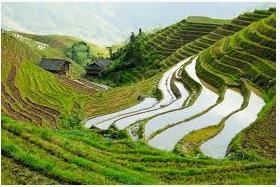UPSC Exam > UPSC Tests > Indian Polity for UPSC CSE > Test: Rural & Urban Livelihoods - UPSC MCQ
Test: Rural & Urban Livelihoods - UPSC MCQ
Test Description
10 Questions MCQ Test Indian Polity for UPSC CSE - Test: Rural & Urban Livelihoods
Test: Rural & Urban Livelihoods for UPSC 2025 is part of Indian Polity for UPSC CSE preparation. The Test: Rural & Urban Livelihoods questions and answers have been
prepared according to the UPSC exam syllabus.The Test: Rural & Urban Livelihoods MCQs are made for UPSC 2025 Exam. Find important
definitions, questions, notes, meanings, examples, exercises, MCQs and online tests for Test: Rural & Urban Livelihoods below.
Solutions of Test: Rural & Urban Livelihoods questions in English are available as part of our Indian Polity for UPSC CSE for UPSC & Test: Rural & Urban Livelihoods solutions in
Hindi for Indian Polity for UPSC CSE course. Download more important topics, notes, lectures and mock
test series for UPSC Exam by signing up for free. Attempt Test: Rural & Urban Livelihoods | 10 questions in 10 minutes | Mock test for UPSC preparation | Free important questions MCQ to study Indian Polity for UPSC CSE for UPSC Exam | Download free PDF with solutions
Detailed Solution for Test: Rural & Urban Livelihoods - Question 1
Test: Rural & Urban Livelihoods - Question 2
Which of the following is the non farming activity
Detailed Solution for Test: Rural & Urban Livelihoods - Question 2
Detailed Solution for Test: Rural & Urban Livelihoods - Question 3
Detailed Solution for Test: Rural & Urban Livelihoods - Question 4
Detailed Solution for Test: Rural & Urban Livelihoods - Question 5
Detailed Solution for Test: Rural & Urban Livelihoods - Question 6
Detailed Solution for Test: Rural & Urban Livelihoods - Question 7
Test: Rural & Urban Livelihoods - Question 8
There are almost ____ crore street vendors' in the country working in urban areas
Detailed Solution for Test: Rural & Urban Livelihoods - Question 8
Detailed Solution for Test: Rural & Urban Livelihoods - Question 9
Test: Rural & Urban Livelihoods - Question 10
Which of the following is not the reason for crop failure
Detailed Solution for Test: Rural & Urban Livelihoods - Question 10
|
154 videos|985 docs|260 tests
|
Information about Test: Rural & Urban Livelihoods Page
In this test you can find the Exam questions for Test: Rural & Urban Livelihoods solved & explained in the simplest way possible.
Besides giving Questions and answers for Test: Rural & Urban Livelihoods, EduRev gives you an ample number of Online tests for practice















